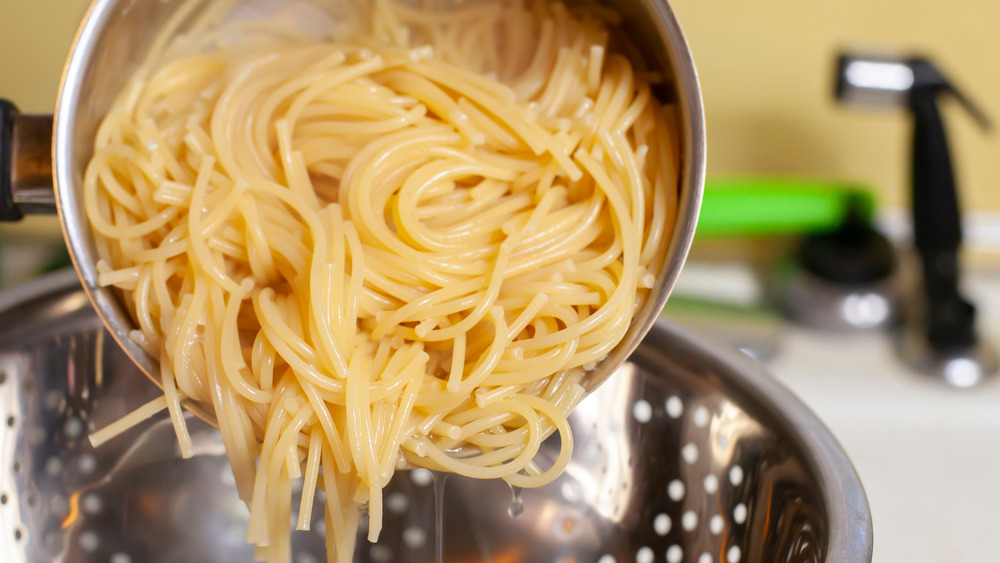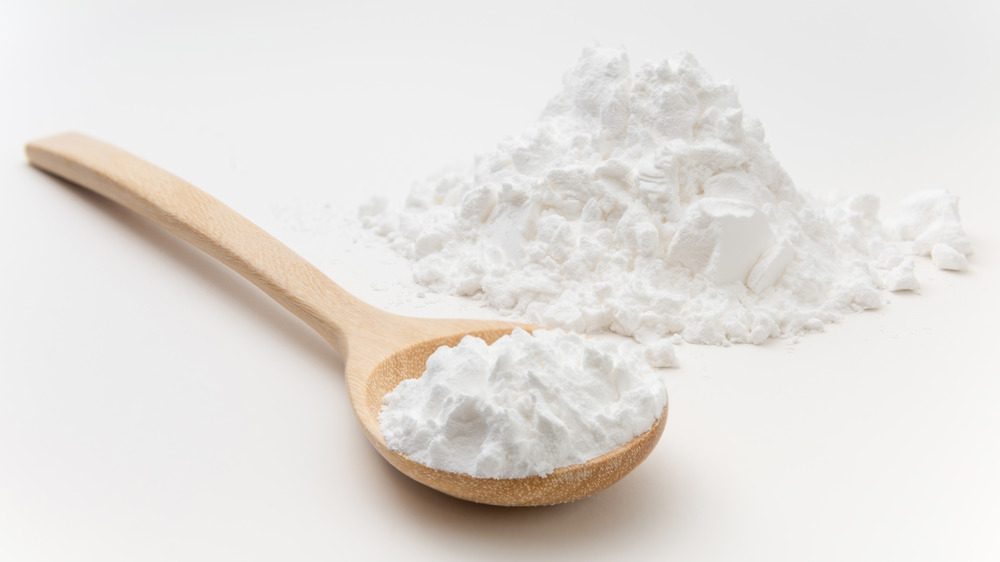What You Should Do If You Forgot To Save Your Pasta Water
One of the less practical cooking tips that food experts persist in pushing is telling us that we should never, ever throw out our pasta water. Unless you have a large kitchen, great timing, adequate coordination, and another pot at the ready, plus a free burner or counter top to put it on, this may not be such an easy thing to do. After all, when pasta is done, it's done, and you need to drain the water ASAP before your noodles turn to inedible mush. The best way to do this is to strain the pasta through a colander, but remember, you're dealing with water that's still pretty close to boiling and the safest way to get rid of it in a hurry is to pour that water right down the sink.
Okay, so a little pasta water can help to make your sauces smoother and silkier and all that stuff, and yes, you can also use it for baking and make cocktails and yada yada yada. As for those cooking hacks advising you to save all the pasta water every time and freeze it for future use, though...psshhh, who's got the freezer space? In many cases, all you're going to need are a few spoonfuls of pasta water anyway, so just dip these out before your pasta is done. If you forget this step, though, no worries. You can easily make a DIY version of that "liquid gold" without any danger of splashing boiling water on yourself.
How to create DIY pasta water
When one of the Milk Street cooking school's blog readers noted that neither gluten-free nor whole wheat pastas really produce the kind of starchy water that helps to thicken a sauce, their chefs jumped right in to remedy this problem by creating a pasta water substitute that didn't involve any actual pasta. All you need to make this alternative is just two ingredients: cornstarch and salt. And water, of course.
You start by mixing 1/4 teaspoon each of cornstarch and kosher salt into one cup of water (the blog notes that few recipes suggest reserving a greater amount of water), then bringing it to a boil. If you want starchier water, though, such as might be used for a thick, creamy or cheese-based sauce, you could increase the cornstarch to 1/2 teaspoon. They advise using the microwave: nuke it for two minutes, stir, then give it another two minutes of heat.
So how did the DIY cooking water compare to the real deal? The cooking school chefs said they prepared several pasta recipes using both traditional pasta water and their substitute and "found them almost indistinguishable." So there you go — with this recipe under your belt, you can now feel free to drain all your pasta water without invoking the wrath of Giada De Laurentiis.

